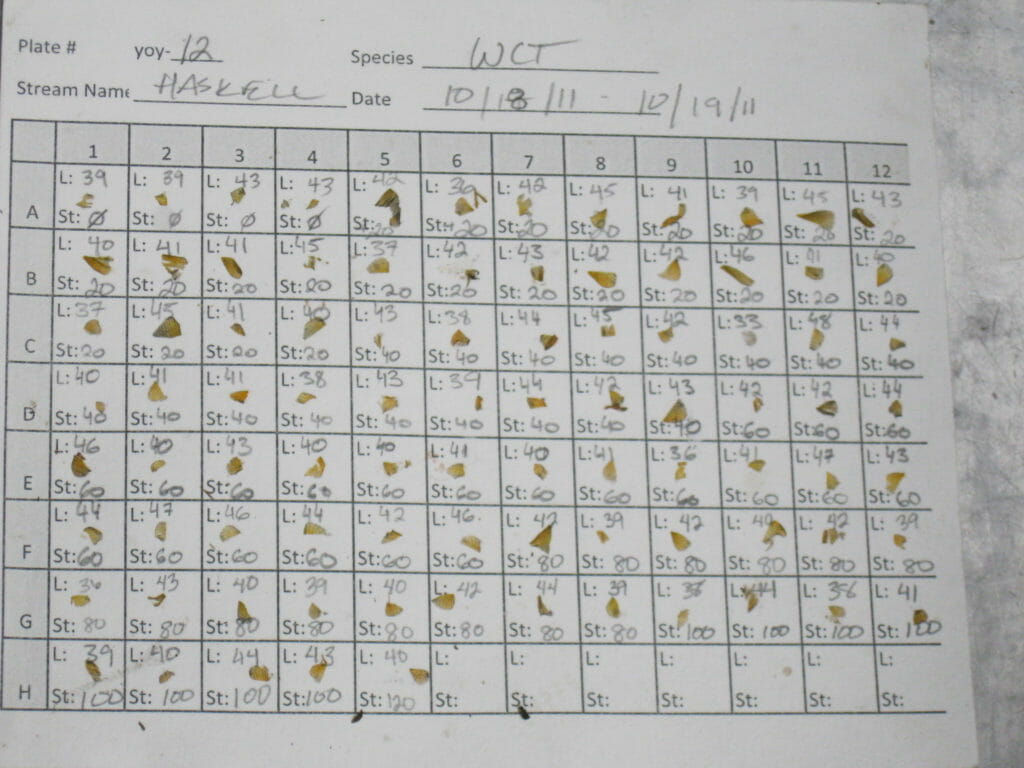
Genetic diversity is an important component of population resiliency, providing a varied toolbox fish rely on to adapt to a changing environment. Small, isolated populations inevitably lose genetic variability over time and become more distinctive genetically from other populations. Simply by characterizing genetic patterns within and among populations across a landscape, then, we can glean insight as to their relative size, history, and connectivity — important factors for assessing conservation status and needs.
Resources
In this study we used genetic characteristics to evaluate the impacts of fire on native redband trout populations in Idaho. We surveyed genetic diversity of trout in 55 tributary streams varying in impacts from wildfire. We expected wildfire disturbance would have reduced local population sizes, and therefore genetic diversity, compared to populations that had not experienced fire in recent history. Our results, however, showed little evidence of these influences. Instead, the level of genetic diversity was lower in fish collected upstream of culvert barriers, suggesting that human-caused isolation may pose greater threats to populations of native trout than wildfire.
The Lahontan cutthroat trout is a highly unique and federally listed trout found in the Lahontan Basin of the Great Basin Desert. Today the fish persists in only 1% of its historical lake habitat and <10% of its stream/river habitat, where remaining populations are generally isolated in small habitat fragments. In this study we updated our understanding of the genetic “health” of populations, sampled across the range, using modern genetic sequencing techniques. We uncovered previously unknown hybridization in several priority systems including one lake, pointing to immediate management needs. Signals of genetic risk for many remaining populations raise concern about their long-term evolutionary potential and suggest a need for more intensive genetic monitoring, and possibly active genetic management, in the future.
Environmental DNA, or eDNA, is an effective and efficient tool for detecting the presence or absence of different species in nature without ever having to handle or even see the critter. In the aquatic environment, cells from various organisms can be filtered straight from a sample of water. DNA is then extracted in the lab and can be queried for different species – but the technique requires the availability of a unique genetic identifier for each organism of interest. This study details field samples and lab techniques used to develop a new marker to detect Lahontan and Paiute cutthroat trout (either, these two closely related sub-species could not be distinguished here), which is already being applied to monitor Lahontan cutthroat trout presence in remote habitats across their range.


